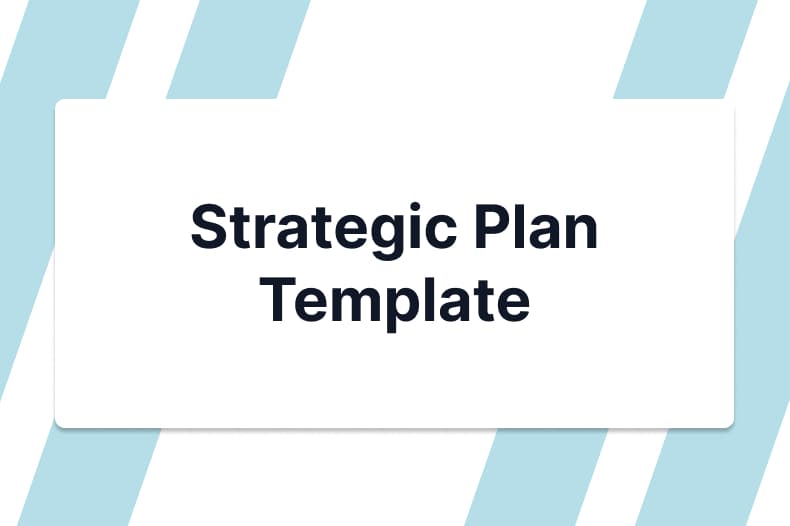
Business plan template free
What is a Business Plan?
A business plan is a strategic document that outlines a company's objectives, target market, products or services, competitive landscape, operational plans, marketing strategies, and financial projections. It provides a blueprint for how the business will achieve its goals and generate revenue.
Why is a Business Plan Needed?
A business plan serves multiple purposes:
- Guiding Operations and Strategy: It provides a clear direction, helping entrepreneurs and managers make strategic decisions aligned with the company's goals.
- Securing Funding: Investors and lenders require business plans to assess the viability of the business. A strong business plan demonstrates potential profitability and reassures stakeholders.
- Setting Objectives and Benchmarks: With measurable objectives, businesses can track progress and adjust their strategies to meet or exceed targets.
- Risk Mitigation: A business plan addresses potential risks and outlines strategies to handle challenges, helping the business to be resilient in unpredictable circumstances.
When is a Business Plan Needed?
A business plan is essential at various stages:
- Startup Phase: New businesses create a plan to establish a foundation for growth and attract initial funding.
- Expansion: Businesses looking to enter new markets or launch new products need updated business plans to address the new scope.
- Operational Shifts: For companies pivoting their focus, a revised business plan helps navigate the change and communicate it effectively to stakeholders.
Benefits of a Business Plan
- Focus and Discipline: Keeps the business on course and minimizes distractions by emphasizing key goals and tasks.
- Enhanced Decision-Making: Supports strategic decisions on resource allocation, marketing, and operations based on clear data and forecasts.
- Communication Tool: Aids in communicating the company’s vision, mission, and goals to employees, investors, and partners.
- A well-crafted business plan is thus invaluable not only for launching a business but also for sustaining growth and achieving long-term success.
Business Plan Structure
1. Executive Summary
Provide a concise overview of your business plan. This section should summarize the key points of each section and highlight what makes your business unique.
- Company Overview: Brief description of your business, its mission, and objectives.
- Products/Services: Outline what you offer and the needs it meets.
- Market Opportunity: Summarize the market analysis and target audience.
- Competitive Advantage: Explain what sets your business apart from competitors.
- Financial Highlights: Briefly mention projected revenues and profitability.
- Funding Requirements: State how much capital you need and how it will be used.
2. Company Description
Detail your company's background, structure, and goals.
- Mission Statement: Define your business's purpose and core values.
- Company History: Share the origin story and significant milestones.
- Business Structure: Indicate whether you're a sole proprietorship, partnership, LLC, etc.
- Location: Describe your business's physical or online presence.
- Objectives: Outline short-term and long-term goals.
3. Market Analysis
Analyze your industry, market trends, and target customers.
- Industry Overview: Discuss the current state and future outlook of your industry.
- Target Market: Identify your ideal customers and market segments.
- Market Needs: Explain the problems or needs your product/service addresses.
- Competitor Analysis: List main competitors and analyze their strengths and weaknesses.
- Market Share: Estimate your expected share of the market.
4. Organization and Management
Explain your business's organizational structure and introduce the management team.
- Organizational Structure: Provide an organizational chart if applicable.
- Ownership Details: List owners and their stakes in the company.
- Management Team: Highlight key team members and their qualifications.
- Advisors: Mention any external consultants or advisory board members.
5. Products or Services
Describe what you're selling or the services you're offering in detail.
- Product/Service Description: Explain features, benefits, and uniqueness.
- Development Stage: Indicate whether it's conceptual, prototype, or market-ready.
- Intellectual Property: Note any patents, trademarks, or proprietary technology.
- Future Products/Services: Outline plans for expansion or new offerings.
6. Marketing and Sales Strategy
Outline how you plan to attract and retain customers.
- Marketing Plan: Detail your strategies for branding, advertising, and promotions.
- Sales Strategy: Explain your sales process, channels, and team structure.
- Pricing Strategy: Justify your pricing model compared to competitors.
- Customer Retention: Describe how you'll maintain customer loyalty.
7. Operational Plan
Detail the logistics of running your business.
- Operational Process: Explain day-to-day operations and workflows.
- Location and Facilities: Describe your business's physical setup.
- Equipment and Technology: List necessary tools, equipment, and software.
- Suppliers and Partners: Identify key suppliers and business partners.
- Inventory Management: Discuss how you'll manage stock levels.
8. Financial Plan
Provide financial projections and funding requirements.
- Startup Costs: Itemize initial expenses to launch the business.
- Revenue Projections: Forecast sales for the next 3-5 years.
- Profit and Loss Statement: Project income and expenses.
- Cash Flow Statement: Predict cash inflows and outflows.
- Balance Sheet: Outline assets, liabilities, and equity.
- Break-even Analysis: Calculate when the business will become profitable.
- Funding Requirements: Specify how much funding you need and its allocation.
- Exit Strategy: If applicable, explain how investors will recoup their investment.
9. Appendix
Include supplementary materials that support your plan.
Include supplementary materials that support your plan.
- Resumes: Provide CVs of key team members.
- Market Research Data: Attach detailed studies and surveys.
- Legal Documents: Include any legal agreements, permits, or licenses.
- Product Images: Add photos or diagrams of your products.
- Testimonials or References: Share endorsements from customers or partners.
Instructions:
- Customization: Replace placeholder sections with your specific information.
- Clarity: Use clear and concise language throughout the document.
- Evidence-Based: Support claims with data, statistics, and real-world examples.
- Professionalism: Proofread for errors and maintain a formal tone.
- Review: Regularly update the plan to reflect changes in your business.

